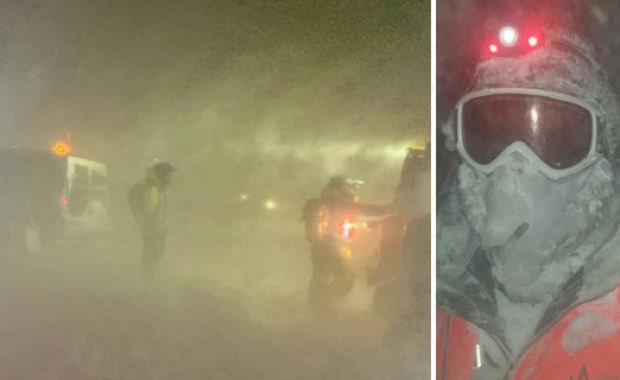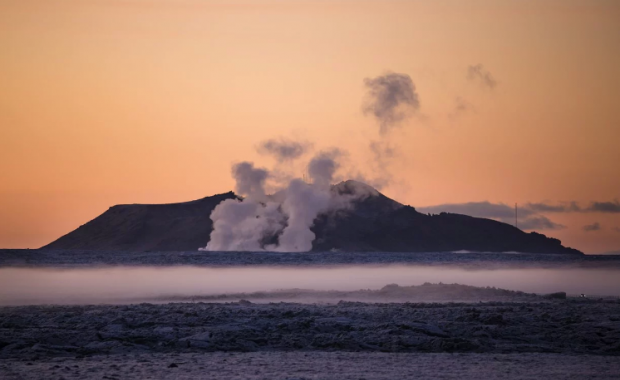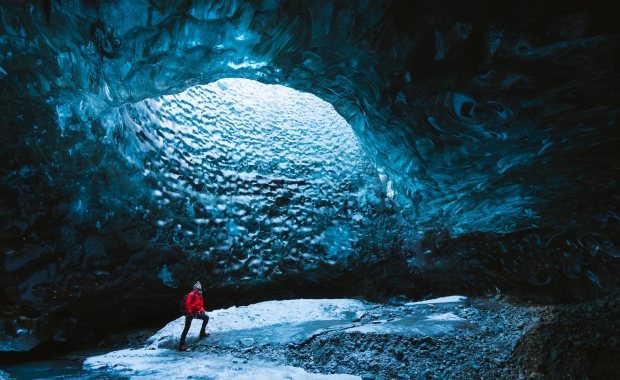To whale, or not to whale, is that the question? Sometimes it was for scientific purposes, other times it was for commercial purposes, but since the International Whaling Commission’s (IWC) moratorium in 1986, Iceland has caught whale on its own terms, and in 2006, resumed commercial whaling.
North American seafood company goes to war
Recent developments have put pressure on Iceland to stop whaling… again. This includes a campaign in the USA where consumers are encouraged not to buy seafood from Iceland that is processed at companies linked to whaling. In fact, the North American seafood company High Liner Foods, announced last week that it would no longer conduct business with companies in Iceland whose business was associated with whaling.
This would include HB Grandi, Iceland’s largest seafood company, whose chairman is none other than Mr. Kristján Loftsson, head of Iceland’s primary whaling company, Hvalur hf.. HB Grandi neither processes nor sells any of its chairman’s whale products.
A statement from HB Grandi objects to High Liner Foods’ decision and says the Icelandic firm remains confident that the withdrawal will not negatively impact HB Grandi’s sales. In its announcement, they also emphasize that HB Grandi is a public limited company with nearly 600 shareholders, whose individual actions cannot be controlled by the board.
While Icelanders are generally apathetic toward whaling, outside influence and pressure has impacted the island nation and caused a bit of unease among its citizens. Whale meat is traditionally consumed by Icelanders, although the tradition’s haydays are long gone. Minke whale is available at restaurants and in grocery stores. Fin whale is no longer consumed locally, but caught by Hvalur hf. and exported to Japan – another whaling nation. The problem in Japan, however, isn’t the lack of whale in its oceans, but rather the lack of appetite among Japanese consumers.
But if Japanese consumers are losing interesting in whale meat, with 4,600 tonnes of whale meat stockpiled in freezers at Japanese ports at the end of 2012 as reported by AP, why are 2,000 tonnes more being shipped from Iceland to Japan via some secret route?
Traveling incognito
On Friday last week, a freezer trawler left the port of Hafnarfjörður and sailed out to Faxaflói Bay. Days prior, more than 2,000 tonnes of whale meat from the freezer-storage facility of Hvalur hf. were loaded aboard the trawler, the largest consignment of whale meat out of Iceland in years, and equals a few years worth of whale meat sales on the Japanese market. Initially, the ship could be tracked by MarineTraffic.com, but early on Saturday morning the trawler’s positioning trackers stopped sending out signals. It’s not suspected that the ship or its crew are in trouble, but rather that they want to travel incognito.

When the radar tracking ceased, the trawler was sailing at 14knots and heading south. The latest information indicates that on Thursday night this week the vessel was sailing along the coastline of West Africa on Thursday night.
According to Icelandic Marine Engine Officer Anna Kristjans this sailing route is a familiar one for those transporting illegal or dangerous cargo. Surely, Kristjansdottir wrote on her blog, an easier way would be to sail through the Suez- or Panama-canal. It would, at the very least, save the crew a number of hours at sea.
It’s worth remembering, however, that only last year, three large containers of fin whale meat were sent back to Iceland by the governments in Rotterdam, Netherlands and Hamburg, Germany. Perhaps the new routing is an attempt to avoid as repeat of last year’s trouble – and perhaps perhaps a way to avoid Hvalur’s arch enemies, Greenpeace or Sea Shepherd by sailing unnoticed. But if this mission is so secret, is whaling worth the trouble?
Iceland's Captain Ahab
Kristján Loftsson, who has become the personification of whaling in both Iceland and abroad, is quite passionate about continuing whaling. When questioned about the number of minke and fin whale caught off the Icelandic coast, he is adamant that both stocks sustainable and in no danger of overfishing.
With only days until this year’s whaling season begins (the season runs from April until September), it will be interesting to see whether all the international attention will affect Loftsson’s whaling this summer – and whether or not the 2,000 tonnes of whale meat ever make it onto the Japanese market.

With US government agencies pushing President Obama to take action against Iceland’s whaling, it’ll be worth paying attention to what the Icelandic government will do. Will it stop whaling and wave a white flag towards Washington, or will it stand its defiant ground on what Loftsson and pro-whaling groups, as well as the current conservative government in Reykjavik believe to be their inalienable birthright?
On Friday last week, a freezer trawler left the port of Hafnarfjörður town and sailed out to Faxaflói Bay. Days prior, more than 2,000 tonnes of whale meat were loaded aboard the trawler, the largest consignment of whale meat out of Iceland in years. The ship could be tracked by MarineTraffic.com, but early on Saturday morning the trawler’s positioning trackers stopped sending out signals. Is Iceland’s primary whaling company, Hvalur hf. trying to run a secret mission to avoid its arch enemies?
To whale, or not to whale, is that the question? Sometimes it was for scientific purposes, other times it was for commercial purposes, but since the International Whaling Commission’s (IWC) moratorium in 1986, Iceland has caught whale on its own terms, and in 2006, resumed commercial whaling.
North American seafood company goes to war
Recent developments have put pressure on Iceland to stop whaling… again. This includes a campaign in the USA where consumers are encouraged not to buy seafood from Iceland that is processed at companies linked to whaling. In fact, the North American seafood company High Liner Foods, announced last week that it would no longer conduct business with companies in Iceland whose business was associated with whaling.
This would include HB Grandi, Iceland’s largest seafood company, whose chairman is none other than Mr. Kristján Loftsson, head of Iceland’s primary whaling company, Hvalur hf.. HB Grandi neither processes nor sells any of its chairman’s whale products.
A statement from HB Grandi objects to High Liner Foods’ decision and says the Icelandic firm remains confident that the withdrawal will not negatively impact HB Grandi’s sales. In its announcement, they also emphasize that HB Grandi is a public limited company with nearly 600 shareholders, whose individual actions cannot be controlled by the board.
While Icelanders are generally apathetic toward whaling, outside influence and pressure has impacted the island nation and caused a bit of unease among its citizens. Whale meat is traditionally consumed by Icelanders, although the tradition’s haydays are long gone. Minke whale is available at restaurants and in grocery stores. Fin whale is no longer consumed locally, but caught by Hvalur hf. and exported to Japan – another whaling nation. The problem in Japan, however, isn’t the lack of whale in its oceans, but rather the lack of appetite among Japanese consumers.
But if Japanese consumers are losing interesting in whale meat, with 4,600 tonnes of whale meat stockpiled in freezers at Japanese ports at the end of 2012 as reported by AP, why are 2,000 tonnes more being shipped from Iceland to Japan via some secret route?
Traveling incognito
On Friday last week, a freezer trawler left the port of Hafnarfjörður and sailed out to Faxaflói Bay. Days prior, more than 2,000 tonnes of whale meat from the freezer-storage facility of Hvalur hf. were loaded aboard the trawler, the largest consignment of whale meat out of Iceland in years, and equals a few years worth of whale meat sales on the Japanese market. Initially, the ship could be tracked by MarineTraffic.com, but early on Saturday morning the trawler’s positioning trackers stopped sending out signals. It’s not suspected that the ship or its crew are in trouble, but rather that they want to travel incognito.

When the radar tracking ceased, the trawler was sailing at 14knots and heading south. The latest information indicates that on Thursday night this week the vessel was sailing along the coastline of West Africa on Thursday night.
According to Icelandic Marine Engine Officer Anna Kristjans this sailing route is a familiar one for those transporting illegal or dangerous cargo. Surely, Kristjansdottir wrote on her blog, an easier way would be to sail through the Suez- or Panama-canal. It would, at the very least, save the crew a number of hours at sea.
It’s worth remembering, however, that only last year, three large containers of fin whale meat were sent back to Iceland by the governments in Rotterdam, Netherlands and Hamburg, Germany. Perhaps the new routing is an attempt to avoid as repeat of last year’s trouble – and perhaps perhaps a way to avoid Hvalur’s arch enemies, Greenpeace or Sea Shepherd by sailing unnoticed. But if this mission is so secret, is whaling worth the trouble?
Iceland's Captain Ahab
Kristján Loftsson, who has become the personification of whaling in both Iceland and abroad, is quite passionate about continuing whaling. When questioned about the number of minke and fin whale caught off the Icelandic coast, he is adamant that both stocks sustainable and in no danger of overfishing.
With only days until this year’s whaling season begins (the season runs from April until September), it will be interesting to see whether all the international attention will affect Loftsson’s whaling this summer – and whether or not the 2,000 tonnes of whale meat ever make it onto the Japanese market.

With US government agencies pushing President Obama to take action against Iceland’s whaling, it’ll be worth paying attention to what the Icelandic government will do. Will it stop whaling and wave a white flag towards Washington, or will it stand its defiant ground on what Loftsson and pro-whaling groups, as well as the current conservative government in Reykjavik believe to be their inalienable birthright?







